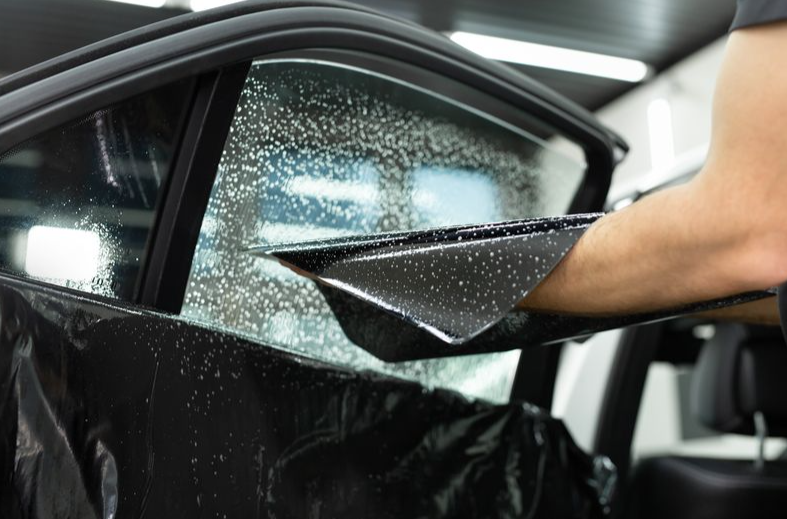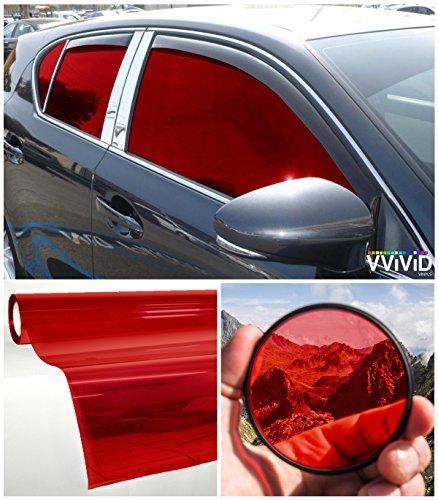A Comprehensive Guide to Understanding Auto Window Tint and Its Benefits
Car window tinting serves greater than just an aesthetic purpose for lorries. It supplies various kinds, each with distinctive attributes and advantages. Comprehending these alternatives, in addition to lawful policies and maintenance suggestions, is crucial for any type of vehicle owner. The advantages may considerably enhance driving convenience and car long life. As one explores the subtleties of window tinting, the question emerges: what kind of color is best matched for private demands?
Recognizing Car Window Color: What It Is and Exactly how It Functions
Auto home window tint functions as a protective obstacle that boosts vehicle appearances while offering practical advantages. This thin movie is used to the indoor surface area of vehicle home windows, decreasing glare and obstructing damaging ultraviolet (UV) rays from the sun. By filtering sunshine, vehicle home window tint helps to control the indoor temperature of the vehicle, resulting in enhanced comfort for guests and decreased dependence on air conditioning.Additionally, it protects the car's interior from fading, maintaining both furniture and dashboard materials. The tint can also improve personal privacy, making it harder for outsiders to see inside the car. Additionally, certain types of window color can raise safety and security; in the event of an accident, the movie assists hold shattered glass with each other, minimizing the danger of injury from flying shards. Generally, car home window color serves both functional and visual objectives, making it a preferred selection amongst automobile owners.
Sorts Of Home Window Color: A Review of Options
When taking into consideration home window color alternatives, several kinds are offered, each with distinct attributes. Colored, metalized, and ceramic home window colors offer differing degrees of warm being rejected, UV protection, and visual appeal. Recognizing these distinctions can assist car owners make notified selections based upon their choices and needs.
Colored Home Window Color
Colored home window tint stands for a popular option among cars and truck proprietors seeking a inexpensive and effective way to boost their automobile's aesthetic appeals and privacy. This type of color is created by putting a layer of color between an adhesive layer and a protective coating, causing a darkened appearance that minimizes glow and boosts visual comfort. While dyed home window color properly obstructs dangerous UV rays, it may not provide the same level of heat rejection as various other tint kinds. Additionally, its color can fade with time, possibly diminishing its efficiency. In spite of these downsides, colored home window color stays popular for its cost-effectiveness and capability to supply a smooth, fashionable want to different lorry designs.
Metalized Home Window Tint
Metalized window color offers a balance of style and capability, making it a prominent option amongst vehicle proprietors. This kind of tint includes metallic particles within the movie, improving both visual allure and warm denial. The reflective top quality of metalized tint helps to minimize glow and boost personal privacy, while also giving UV protection, which safeguards the automobile's interior. Furthermore, metalized home window tint can reinforce home window toughness, possibly protecting against smashing throughout mishaps. It is vital to note that the metal parts can interfere with digital signals, such as GPS and cell phone function. Generally, metalized window tint supplies an efficient service for those seeking a mix of toughness, sunlight, and appearance protection for their cars.
Ceramic Home Window Tint
Ceramic home window tint stands for a sophisticated alternative in the range of automotive home window films, offering distinctive benefits over standard colors. Unlike dyed or metalized films, ceramic tints utilize advanced ceramic particles, which successfully reject warm and UV rays without endangering presence. This modern technology assures that cars stay cooler, lowering reliance on cooling and improving gas performance. Furthermore, ceramic home window colors are much less most likely to interfere with electronic tools, such as general practitioner or mobile signals, making them a functional selection for modern-day automobiles. Their durability and scrape resistance add to a longer life-span contrasted to other kinds of colors. Overall, ceramic home window tint provides remarkable performance, convenience, and security, making it a preferred alternative for critical automobile owners.
Advantages of Vehicle Home Window Tint: Beyond Aesthetic Appeals
While several individuals associate automobile window tint with boosted design, its advantages prolong much past simple aesthetic appeals. One significant benefit is warmth reduction; home window tint can block approximately 99% of harmful UV rays, keeping the indoor cooler and shielding furniture from fading. This not just enhances comfort during heat yet likewise minimizes dependence on air conditioning, resulting in enhanced gas efficiency.In enhancement, auto home window tint gives an added layer of personal privacy and safety. Colored windows make it hard for outsiders to see inside the vehicle, which can hinder burglary and safeguard belongings. Furthermore, several tints reinforce the glass, lowering the chance of smashing in the event of an accident, thus boosting safety.In enhancement to these useful benefits, car home window tint can also add to glow reduction, boosting presence for guests and drivers alike. This multifaceted method to comfort and safety makes window tint a useful investment for vehicle owners.
Legal Considerations: Tinting Laws by State
Prior to committing to car window tint, car owners must navigate a complex landscape of tinting laws that differ by state. Each state has particular legislations regulating the permissible degrees of color darkness and reflectivity for different windows, including windshields, front side windows, and back home windows. These policies usually consist of noticeable light transmission (VLT) percentages, which dictate how much light can travel through the tinted glass.Some states permit darker colors on back windows while restricting front side and windshield tints for security factors. Furthermore, certain states might require a certificate from the maker to confirm compliance with tinting laws. Going against these regulations can lead to fines, necessary removal of the tint, or both. Subsequently, it is necessary for vehicle proprietors to research their state's legislations completely to assure legal compliance before setting up window color. This diligence can conserve money and time over time.
Selecting the Right Tint: Factors to Consider
When picking here the appropriate window tint for a vehicle, several essential aspects enter into play. Color darkness degrees, UV defense scores, and compliance with lawful regulations are essential factors to consider to ensure both looks and performance. Reviewing these facets will certainly assist individuals make an educated choice that fulfills their requirements and abides by local regulations.
Color Darkness Levels
Selecting the ideal color darkness degree is important for attaining the preferred equilibrium in between visual appeals and functionality in auto home window tinting. Various states have varying legal laws relating to tint darkness, which can impact the choice. Typically, colors are determined in percents, with lower portions indicating darker shades. Darker tints provide enhanced privacy and a streamlined look but can minimize exposure, particularly in the evening. Alternatively, lighter colors preserve a more open feeling, making sure ample visibility while still giving some heat and glow decrease. When making a decision, individuals must consider their driving routines, regional regulations, and individual choices. Inevitably, the ideal tint darkness degree improves the vehicle's look while ensuring safety and compliance with lawful criteria.
UV Security Rating
Tint darkness degrees play a substantial role in the overall effectiveness of auto window tinting, but another crucial variable to examine is the UV defense rating of the selected color. This rating suggests the percentage of harmful ultraviolet rays that the tint can block. High-grade colors typically give 99% or more UV defense, safeguarding guests and the car's inside from sunlight damages. Davinci of Michigan. Prolonged exposure to UV rays can bring about skin problems and fading of furniture, making a high UV protection score essential for health and wellness and longevity. When choosing window color, consumers need to prioritize this rating along with darkness levels to ensure maximum convenience and security while driving. Recognizing these aspects help in making an educated choice when investing in automobile window tinting
Legal Laws Conformity
Understanding neighborhood lawful policies is essential for anybody thinking about auto home window tinting. Each state or region has certain laws controling the permitted levels of color darkness and reflectivity for different windows. These regulations usually specify the noticeable light transmission percentage, figuring out just how much light can travel through the colored glass. Non-compliance can result in fines, obligatory removal of the tint, or concerns during vehicle evaluations. Additionally, some areas might have limitations on the use of particular tinting products, calling for consumers to choose items that satisfy safety and security requirements. It is vital for vehicle owners to research their neighborhood regulations completely before picking window tint to assure conformity and stay clear of prospective lawful complications.

Installment Refine: DIY vs. Expert Solutions
Exactly how does one determine between a do it yourself setup and hiring specialist services for car window tinting? The option often rests on budget plan, experience, and wanted outcomes. A do it yourself method can be cost-effective, enabling individuals to conserve on labor costs. It calls for a specific level of ability and knowledge regarding the tinting procedure. Those that are careful and patient may find success with do it yourself sets readily available in the market.Conversely, professional services supply experience and high-grade products, ensuring a remarkable finish. Experts usually ensure their work, supplying satisfaction against possible concerns such as peeling or bubbling. Additionally, they know with local laws pertaining to tinting, which can be intricate for the typical automobile owner.Ultimately, the decision shows an equilibrium in between expense, individual capacity, and the expected quality of the tinting task. Each choice has its advantages, and the best selection depends upon individual scenarios and choices.
Maintenance Tips: Maintaining Your Color in Leading Problem

Frequently Asked Questions
How Much Time Does Window Color Usually Last on an Automobile?
Home window tint normally lasts between five to 10 years, relying on aspects such as high quality, application, and ecological conditions. Regular maintenance and appropriate treatment can expand its life expectancy, ensuring suitable efficiency and appearance over time.
Can Home Window Tinting Damages My Automobile's Original Glass?
Window tinting, when used correctly, does not harm an auto's initial glass. However, incorrect installment or low-quality materials may bring about concerns like peeling or bubbling, possibly influencing the glass's honesty in time.
Is Home Window Tinting Safe for All Kinds Of Vehicles?
Window tinting is normally safe for most vehicles, offered the film adheres to regional guidelines and is properly applied. Some specific cars may call for details considerations, making it necessary to seek advice from experts before setup.
Will Home Window Tinting Gap My Automobile Service Warranty?
The concern of whether home window tinting gaps an auto guarantee typically depends on the producer's plans. Typically, if the color does not harm the automobile, guarantees commonly stay undamaged. However, consulting the dealer is a good idea.
Can I Get Rid Of Window Tint Myself if Needed?
Removing home window tint oneself is feasible, yet it needs careful interest to stay clear of harming the glass. People should make use of ideal tools and strategies to assure a successful elimination without leaving adhesive deposit or scrapes behind. While dyed home window tint efficiently obstructs harmful UV rays, it might not supply the very same level of warm being rejected as other tint types. Ceramic window color represents a sophisticated choice in the range of automotive home window films, offering unique advantages over conventional colors. Prior to committing to automobile window tint, car proprietors should navigate an intricate landscape of tinting guidelines that differ by state. These policies typically include visible light transmission (VLT) portions, which determine just how much light can pass via the tinted glass.Some states allow darker tints on back windows while limiting front side and windscreen tints for security reasons. Tint darkness levels play a substantial duty in the general effectiveness of car window tinting, however another vital variable to evaluate is the UV defense ranking of the selected tint.